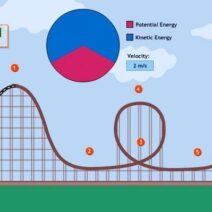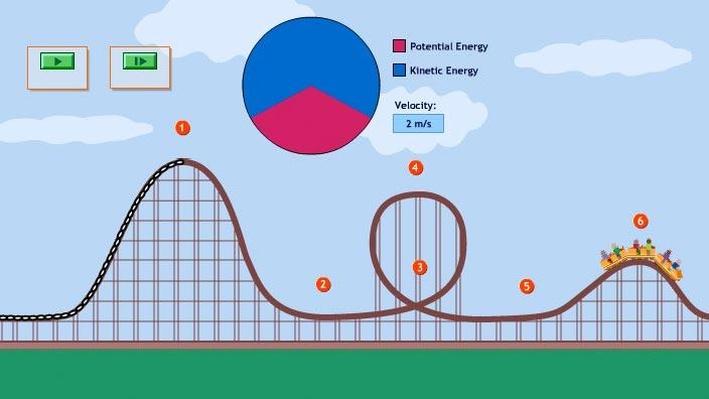Roller coasters have long captured the imagination of thrill-seekers, drawing millions to amusement parks around the world. Yet, beyond the exhilarating drops and dizzying loops lies an intricate ballet of physics—specifically, the principle of conservation of energy. Understanding how this fundamental law of physics governs the functioning of roller coasters not only enhances appreciation for these mechanical marvels but also provides insights into the broader applications of energy conservation in our everyday lives.
The conservation of energy principle states that energy cannot be created or destroyed, only transformed from one form to another. In the context of roller coasters, this law is vividly illustrated through the interplay of potential and kinetic energy. As the coaster ascends a hill, it accumulates potential energy, a reserve of energy stored due to its elevated position. Conversely, as the coaster descends, that potential energy is converted into kinetic energy—the energy of motion—propelling the cars forward with exhilarating velocity.
At the peak of its ascent, a roller coaster attained maximum potential energy. This is observable in attractions like the Steel Vengeance, which proudly features some of the tallest and steepest hills in the industry. Once it plummets down, the potential energy rapidly converts into kinetic energy, which is then responsible for the thrilling speed and g-forces that riders experience. This cyclic transformation between potential and kinetic energy is a dance of physics that defines both the design and the exhilarating experience of roller coasters.
Different types of roller coasters operate on these principles with varying intricacies. Wooden coasters, such as the classic Cyclone, often rely on steel wheels that navigate wooden tracks, creating a unique feel that contrasts with their steel cousins. Steel coasters, like the iconic Millennium Force, utilize smooth rail systems enabling tighter turns and more complex inversions. The variations in design lead to differences in how energy is conserved and utilized, fundamentally influencing the ride experience.
When considering the safety dynamics of roller coasters, the concept of centripetal force is integral. As a coaster navigates sharp turns or loopy inversions, centripetal force acts toward the center of the circular path. Safety measures, including harnesses and train design, work synergistically to ensure that this force maintains riders securely in their seats. Designers meticulously calculate the required speeds and g-forces to ensure maximum thrill while adhering to stringent safety regulations. The conservation of energy therefore not only facilitates the thrill of the ride but also ensures the protection of its passengers.
As aspiring riders ponder the exhilarating experience of a roller coaster, they may overlook the significance that the energy transformations have on ride duration. The initial ascent is crucial; the height and steepness determine the potential energy available for conversion. Coasters that maximize this elevation ensure a longer ride and a smoother transition of energy, sustaining the thrill over a more extended period. Riders may enjoy less jarring experiences on coasters like Fury 325, which ingeniously leverage height to maintain speed and stimulation throughout the journey.
To illustrate further, let’s delve into the concept of friction—a critical factor in roller coaster physics. As the coaster glides along the track, friction acts as a dissipative force, converting some kinetic energy into thermal energy. Consequently, engineers must account for this through careful track design and material selection to mitigate excessive energy loss while optimizing thrill factors. It becomes a balancing act; too much friction can lead to slower speeds, while insufficient friction could result in challenges regarding control and safety.
Moreover, the environmental considerations surrounding energy conservation extend beyond the mechanics of the ride. Amusement parks are increasingly adopting sustainable practices, such as utilizing renewable energy sources for their operations and implementing energy-efficient technologies. By harnessing solar energy to power rides and facilities, parks not only reduce their carbon footprint but also exemplify the principles of energy conservation on a broader scale. As society grapples with climate change challenges, the integration of physics and environmental stewardship in amusement parks serves as an exemplary model for future innovations.
In conclusion, the thrilling world of roller coasters offers more than just entertainment; it provides a vivid representation of the conservation of energy in action. Through the conversion of potential to kinetic energy, the mechanics behind roller coasters reveal engaging truths about physics, safety, and environmental responsibility. As riders embrace the magical fusion of physics and adventure, they also participate in a greater dialogue about energy conservation and sustainability. The next time you ascend that first hill, take a moment to appreciate the profound energy transformations powering your exhilarating journey—an adventure not only of speed but also of scientific wonder.






